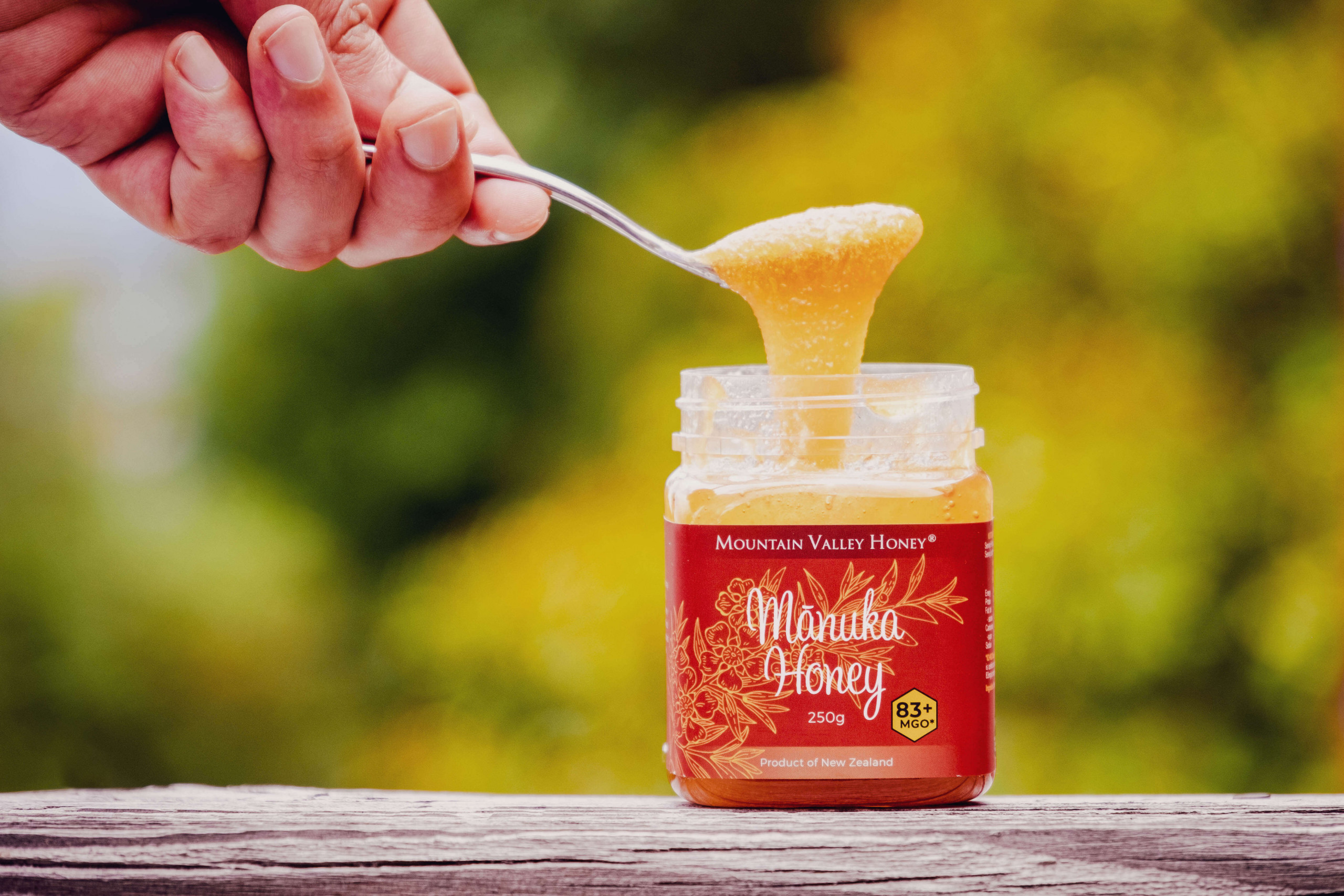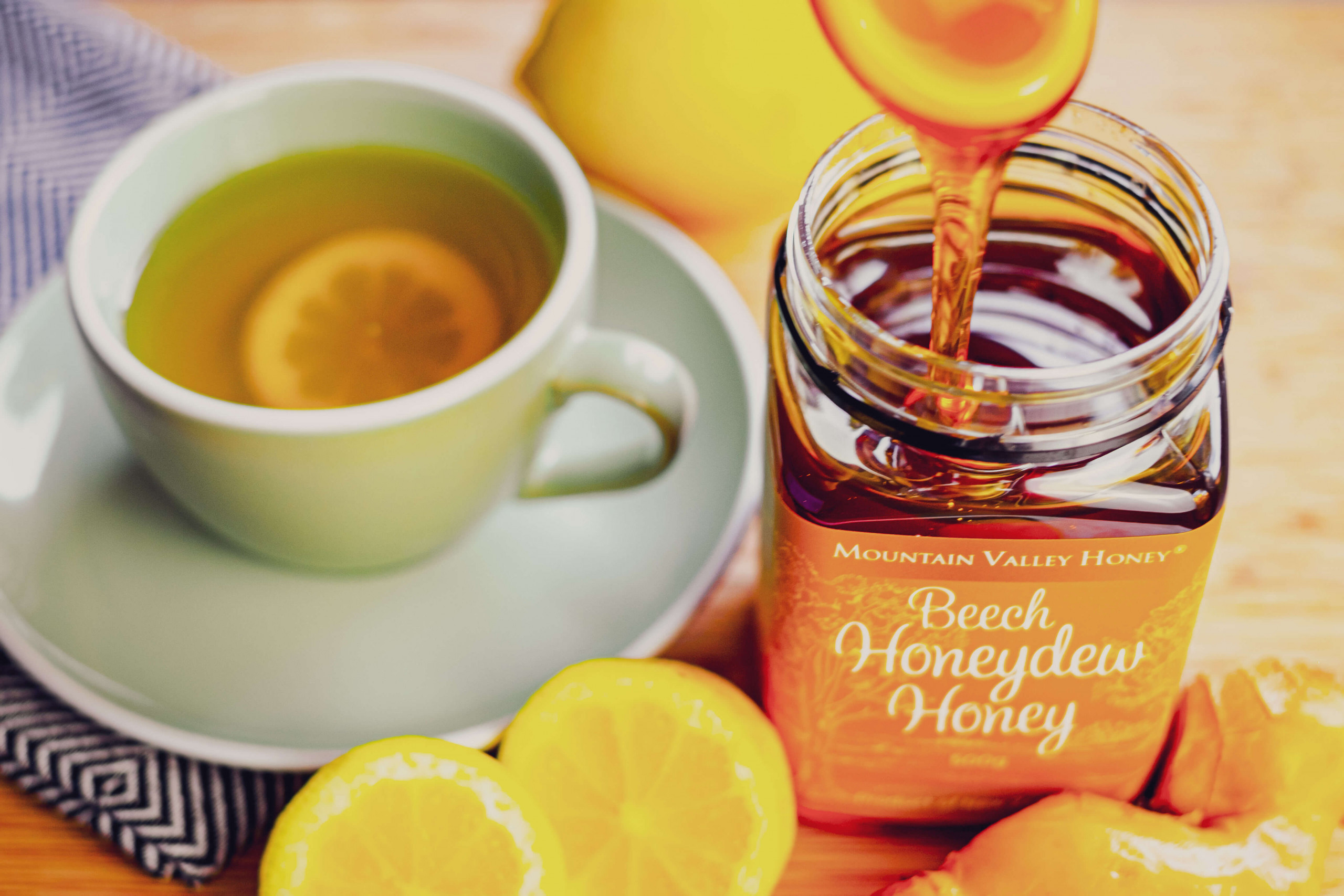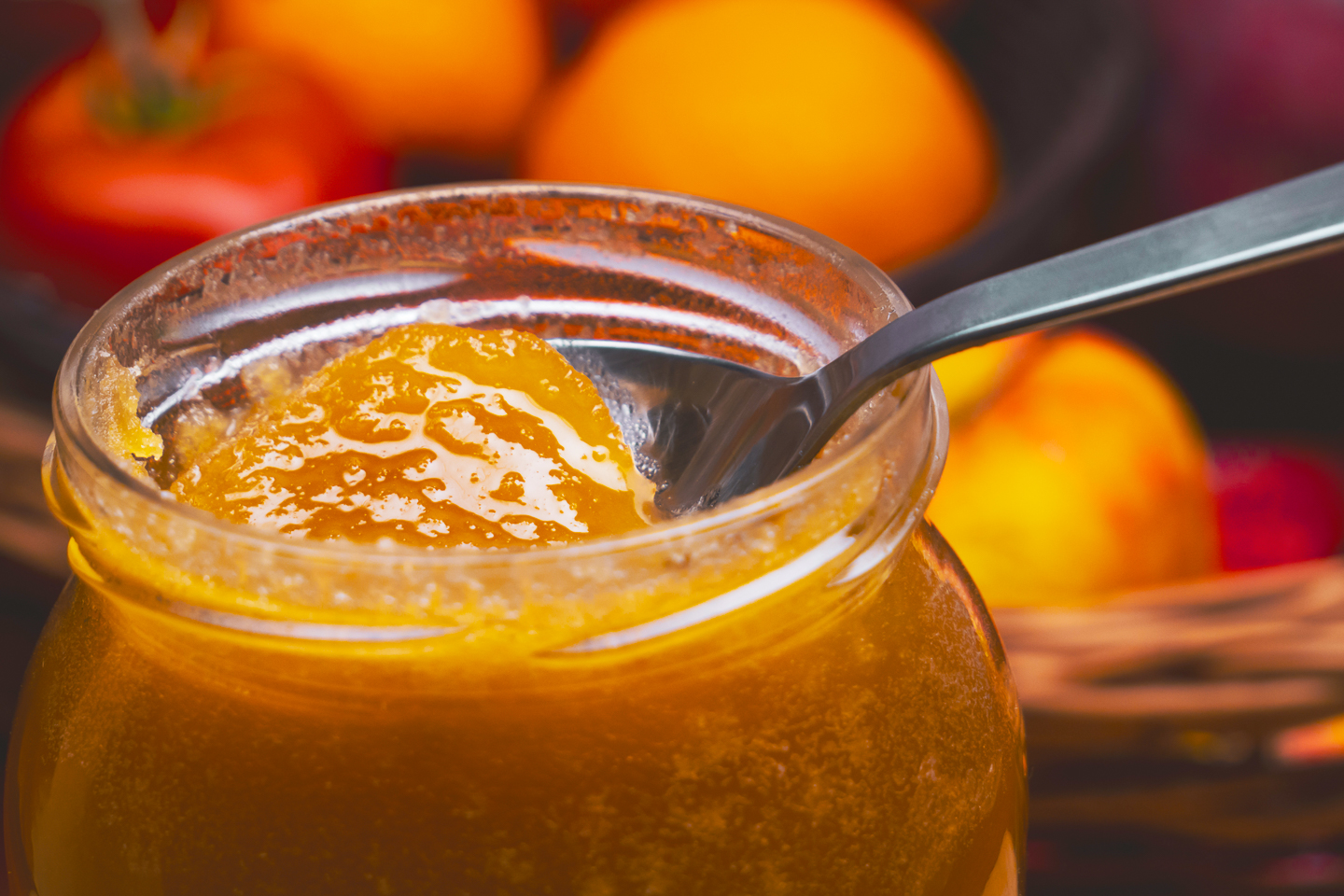Kamahi Honey: A Hidden Treasure of New Zealand
If you haven’t discovered Kamahi honey, then you may be in for a pleasant surprise. This sophisticated honey is relatively unknown outside of New Zealand. With a rich golden colour and soft texture, Kamahi has an intense flavour, with notes of caramel. This raw honey doesn’t just taste great — early research suggests it has health benefits, too. There’s no doubt, Kamahi is one of the most underrated New Zealand honeys.
In this article, we discuss everything you need to know about Kamahi Honey. We also take a look at the key differences between Kamahi Honey vs Manuka Honey.
The Kamahi Tree (Weinmannia racemosa)
Kamahi honey is foraged by bees from the elegant white flowers of the Kāmahi tree. One of our most common trees, Kamahi grows all over New Zealand.

Growing up to 25 metres tall, it often begins life as an epiphyte growing on branches of other species such as tree ferns. Because it establishes so easily, Kamahi is an important plant for forest regeneration.
The fluffy white spikes of the Kamahi flowers are loaded with nectar. This makes them irresistible to bees.

The Kamahi Tree usually flowers in late October through to December. This makes it the first honey we harvest every season.
Māori understood the value of the Kamahi tree, seeing it as tapu, or sacred. They boiled the bark to make a treatment for flu and colds. The antibacterial properties of the inner bark made it great for wounds and burns. You can even make black dye from the bark of the tree. In fact, early settlers to New Zealand valued the Kamahi as an effective agent in tanning leather.

The History
Kamahi honey used to be considered a low-quality honey, due to a bitter aftertaste. But, the bitter taste had nothing to do with the Kamahi. It was due to the presence of Quintinia nectar.
Quintinia plants are also native to New Zealand but their nectar is quite bitter. In the wild, Quintinia and Kamahi can be found in the same locations. Plus, the two plants also flower at the same time. In the early days, this meant honey labelled “Kamahi” often contain the bitter Quintinia nectar. Over time, people began to regard it as lower-quality, not knowing it wasn’t real Kamahi honey.
These days, New Zealand beekeepers are pickier where they place their hives. By choosing locations with a lot of Kamahi, and little Quintinia, this problem can be avoided.
If you are lucky to try real Kamahi honey, you’ll know it truly is something special. It’s rich, elegant, and straight from a storybook. In fact, for Mountain Valley Honey owner Nicky Elwood, Kamahi is her favourite variety of honey.

Kamahi Honey Health Benefits
Like most raw honey, Kamahi Honey is antibacterial and anti-inflammatory. This is mostly thanks to high levels of hydrogen peroxide. This suggests it could be a great natural treatment for a range of ailments.
Kamahi is also packed full of nutrients, minerals and antioxidants. In fact, it has one of the highest mineral counts of any New Zealand honey, second only to Honeydew honey. While early research is promising the health benefits of Kamahi honey are only just starting to be explored.

Kamahi Honey vs Manuka Honey
The recent interest in Manuka honey has been driven by a range of scientific studies. In the 1980s, researchers discovered that Manuka honey has very high levels of methylglyoxal (MGO) and have linked this to a number of health benefits.
Many people would be surprised to hear that researchers found that Kamahi honey had higher levels of minerals and nutrients than Manuka. Like all raw honey, it has a host of enzymes and antioxidants that are good for us.
However, there isn’t much research about Kamahi honey’s health benefits. There is more to learn as scientists continue researching the unique properties of raw New Zealand honeys.
When it comes to taste, Manuka has a strong earthy flavour while Kamahi honey is more like toffee, with a hint of vanilla. Many people prefer it’s lighter taste.
When thinking about Kamahi honey vs Manuka honey, it pays to consider the price. Because Manuka honey is well-known, with its own MGO rating system, it commands a high price. Kamahi honey is much cheaper, partially because fewer people know about it. It really is a hidden treasure.

Uses for Kamahi
Kamahi honey’s soft texture and intense flavour make it great for spreading on toast. Its caramel notes also make it the perfect sweetener for coffee. This honey is wonderful on the cheeseboard and goes well with creamy, white-mould cheeses. Kamahi is a great base for sweet sauces and can balance spicy dishes such as Thai food.
Like most honeys, Kamahi has it’s own unique flavour profile, which some chefs like to use to their advantage. Using Kamahi will add unique flavour notes to your cooking that you can’t get from other sweeteners.

In conclusion
This honey deserves a lot more attention than it gets. There are many benefits of choosing raw Kamahi honey. It tastes great, is full of nutrients and is great value for money.
Whether you eat it straight off the spoon, stir it into your coffee, or use it to add creative flair to special dishes, Kamahi honey is a wonderful everyday treat to keep in your pantry.
If you want some raw Kamahi honey for yourself, then you’re in luck. Here at Mountain Valley Honey, we have a variety of delicious raw New Zealand honey including Kamahi honey, available in a range of sizes.
Note: Kāmahi is a Māori name and should actually be spelt with a macron, to show that the vowel is long. We have omitted the macron here so people can find this article in Google searches.


